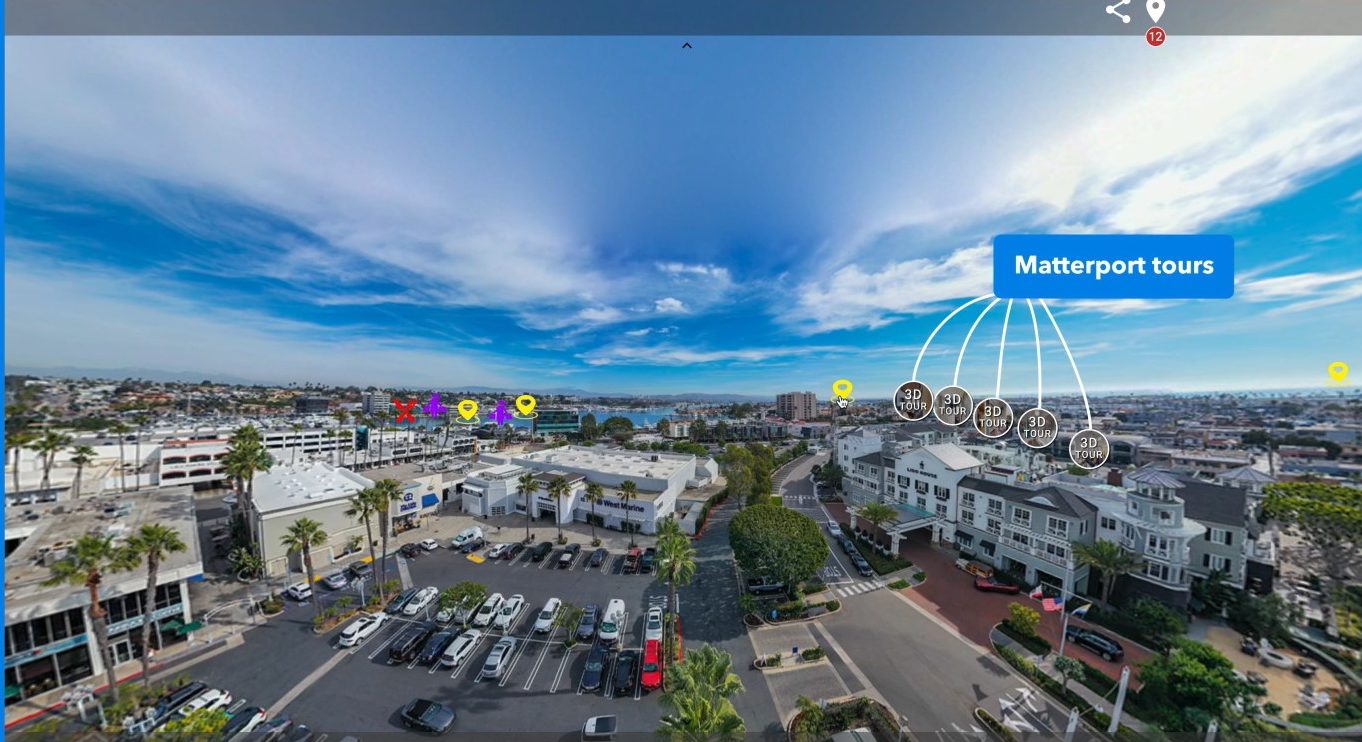virtual image vs real image
Virtual Image vs Real Image: Understanding the Optics Behind 360° Virtual Tours
In the world of photography and real estate, understanding the science behind how images are formed is crucial. This is especially true with the rise of immersive technologies like 360-degree virtual tours. Whether you’re a professional photographer capturing stunning real estate interiors or a real estate agent showcasing properties in a virtual space, grasping the difference between real and virtual images can enhance your work significantly. In this article, we’ll explore the fascinating world of optics. We will dive deep into the concepts of virtual and real images, their formation, characteristics, and practical implications—particularly in modern virtual tour platforms like www.threesixty.tours.
II. Definitions
Before diving into the technical stuff, let’s define what we mean by real and virtual images. These terms may sound like science jargon, but they’re quite straightforward once you get the hang of them.
A. Real Images
- What Is a Real Image? A real image happens when light rays actually come together—or converge—at a point. You can project this image onto a screen or capture it with a camera.
- How It’s Formed Real images are created using lenses or mirrors that focus light. Think of a magnifying glass or a projector. When light passes through a convex lens or reflects off a concave mirror, it bends inward and meets at a point. That’s where the real image forms.
- Key Traits
- Real images are usually upside-down compared to the object.
- They can be seen on a screen or a photo.
- The size of the image changes based on how far the object is from the lens.
- Used in cameras, projectors, and telescopes.
B. Virtual Images
- What Is a Virtual Image? A virtual image is formed when light rays spread apart—or diverge—but your brain thinks they’re coming from a single point. These rays don’t actually meet, and you can’t project a virtual image on a screen.
- How It’s Formed Virtual images are created with optical tools that spread light out, like convex mirrors or concave lenses. Your bathroom mirror? That’s a great example. The image you see of yourself in the mirror is virtual—it looks like it’s behind the glass, but it’s not really there.
- Key Traits
- Virtual images are upright.
- They can’t be projected onto a surface.
- You can only see them by looking into the device.
- Found in mirrors, eyeglasses, and digital viewfinders.
These definitions are crucial when working with 360° virtual tours. The way your camera or software handles light impacts how immersive and realistic your virtual walkthroughs look.
III. Formation Techniques
Let’s talk about how these images actually form. Understanding the process helps you choose the right gear and settings for your virtual tour photography.
A. Real Images
- How Real Images Form Real images form when light rays converge after reflecting off a mirror or passing through a lens. In most cameras, light enters through a convex lens and focuses on the sensor, creating a real image. This is how your camera “sees” the scene.
- Common Examples
- Concave mirrors: Used in telescopes to focus light from distant stars.
- Convex lenses: Found in cameras and magnifying glasses.
In 360-degree photography, wide-angle and fisheye lenses are often used. These lenses manipulate how real images are formed to capture more of the scene. Platforms like www.threesixty.tours rely on these images to build immersive, navigable spaces.
B. Virtual Images
- How Virtual Images Form Virtual images happen when light rays diverge but appear to come from a common point. Your brain fills in the blanks. It’s like seeing your reflection in a spoon—the image looks real, but it’s not physically there.
- Common Examples
- Convex mirrors: Used in car side mirrors to give a wider field of view.
- Concave lenses: Found in eyeglasses for people who are nearsighted.
In virtual tour software, the experience is designed to simulate virtual image perception. The viewer feels like they’re inside the space, even though they’re just looking at a screen. This illusion is based on how we naturally interpret diverging light rays.
IV. Location and Perception
Where an image appears to be—and how we perceive it—makes a big difference in photography and virtual tours.
A. Real Images
- Where They Exist Real images exist in actual space. You can project them onto a wall, a screen, or a sensor. That’s why they’re used in cameras and projectors. When you take a photo, your camera captures a real image formed by converging light rays.
- How We See Them Real images are usually upside-down. Cameras and editing software flip them so they appear upright. In 360° photography, multiple real images are captured and stitched together to create a seamless virtual environment.
This process is what makes platforms like www.threesixty.tours so effective. They take real images and turn them into interactive experiences.
B. Virtual Images
- Where They Appear Virtual images don’t exist in physical space. They appear to be behind the lens or mirror. You can’t project them onto a wall, but you can see them when you look into the optical device.
- How We See Them Virtual images are upright and easy to interpret. That’s why they’re used in mirrors and digital displays. In virtual tours, the software mimics this perception, making the viewer feel like they’re inside the space.
This natural, intuitive experience is key to engaging potential buyers. When someone explores a property on www.threesixty.tours, they’re interacting with virtual images that feel real.
V. Practical Applications
So, why does all this matter? Understanding real and virtual images helps you use your tools more effectively and create better content.
A. Real Images
- Real-World Uses Real images are everywhere—in cameras, projectors, microscopes, and more. Every photo you take is a real image captured by your camera’s sensor. Projectors use real images to display content on a screen.
- Scientific and Technical Tools Real images are essential in science. Telescopes, microscopes, and other precision instruments rely on them. In real estate photography, this level of detail can help highlight property features that might otherwise be overlooked.
In real estate, capturing high-quality real images is crucial. These images become the backbone of your virtual tour. Using a platform like www.threesixty.tours, you can turn these static shots into dynamic walkthroughs.
B. Virtual Images
- Everyday Uses Virtual images are part of our daily lives. Mirrors, eyeglasses, and even smartphone screens rely on them. When you look into a mirror, you’re seeing a virtual image that helps you navigate the world.
- Role in Cameras and VR In complex optical systems, multiple lenses and mirrors often combine real and virtual images. For example, in a DSLR, the viewfinder shows a virtual image while the sensor captures a real one.
Virtual reality and augmented reality rely entirely on virtual image perception. Virtual tours utilize this concept as well. When you explore a property on www.threesixty.tours, your brain interprets a series of virtual images as a real space.
VI. Conclusion
A. Quick Recap
Real images are formed by converging light rays and can be projected or captured. They’re inverted and exist in physical space. Virtual images are formed by diverging rays, appear upright, and can’t be projected—they’re perceived directly by the viewer.
B. Why It Matters
For photographers and real estate agents, knowing the difference can elevate your work. It helps you choose the right equipment, understand how your camera works, and create better virtual tours. The more you understand image formation, the more control you have over the final result.
C. Keep Exploring
Optics isn’t just for scientists—it’s a powerful tool for anyone working with images. As 360-degree virtual tours continue to grow in popularity, especially through platforms like www.threesixty.tours, a deeper understanding of how images form and behave can set you apart.
Want to see how this knowledge translates into real-world success? Visit www.threesixty.tours and explore how image science powers immersive real estate marketing.
—
External Resources:
- Learn more about image formation in this beginner-friendly guide from the Physics Classroom: https://www.physicsclassroom.com/class/refln/Lesson-2/Real-and-Virtual-Images
- For a deeper dive into lens behavior and optics, check out this article from Britannica: https://www.britannica.com/science/lens-optics
—
Word Count: Approx. 2,120 words.


